
Looking downriver from Tower Bridge, 1974
It was in 1974 that I almost moved back to London, to Staines, which should have become a part of Greater London when that was formed in the 1960s and Middlesex (who had been kind enough to pay me a student grant in their final years) was abolished. Of course, for those of us who live there, Middlesex lives on – in my postal address, and I believe we still have a cricket team, though the ground where it plays, Lords, in St John’s Wood, was stolen by London many years earlier, and Middlesex Guildhall is now our country’s Supreme Court.
But rabid Tory backwoodsmen from Sunbury and Shepperton baulked at the idea of being a part of the London Borough of Hounslow, and since then we’ve been in limbo. Officially part of Surrey, but generally Surrey denies we belong, being on the wrong side of the Thames, and I live in the curious borough of Spelthorne, wherever that is. And wherever it is it is a pretty hopeless borough, certainly as far as Staines is concerned. One that thinks trying to rename Staines as Staines upon Thames makes sense, and that Ali G, who has done more to put Staines on the map than anyone else has given it an unsavoury reputation.
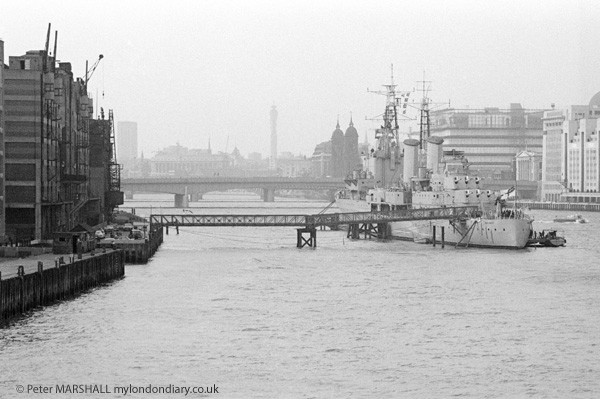
View upriver from Tower Bridge
I grew up in Hounslow, but had lived away from London for a little over 10 years, and coming back to Staines, then a mere 26 minutes by train from Waterloo (its slid around 9 minutes further west since) I’d decided I should get to know my natal city, about which, like most Londoners I was almost totally ignorant. So I bought a copy of art-historian David Piper‘s Companion Guide to London which had just been issued in a revised version in 1974 and started on Chapter 1: The Tower and Tower Hill, going on from there to explore a little around St Katherine’s Dock and Tower Bridge, where I took these pictures on a day in the summer. Although Sir David Piper died at the end of 1990, his guide, first published in the 1960s when he was director of the National Portrait Gallery in London and last revised in 2000, is apparently still available.

Downriver from Tower Bridge towards Rotherhithe Church and Bermondsey
The views, still recognisable, are of a London far more dependent on the river, with mills, warehouses and wharfs, and more noticeably, missing many of today’s tall buildings. The pictures that I took of the Tower itself are of less interest, as it has changed little over the years. But St Katherine’s Dock was disappearing in front of my camera, with Telford’s tall and well-proportioned warehouses being demolished to make room for inferior new developments.
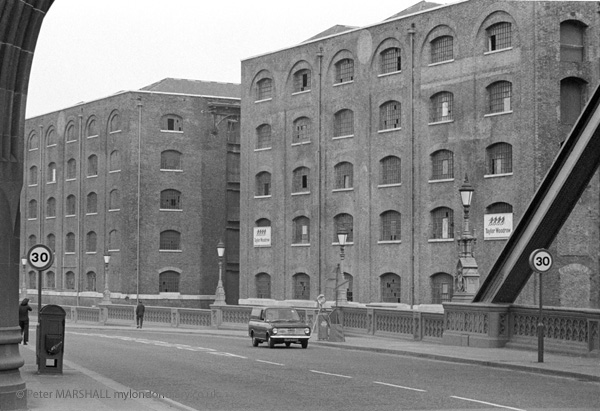
St Katherine’s Dock Warehouses by Philip Hardwick from the 1820s from Tower Bridge

The warehouses have been replaced by a misleading modern pastiche
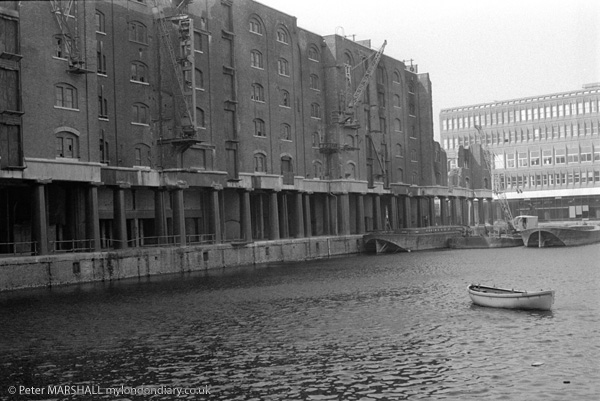
St Katherine’s Dock – demolition seen from the inside
I ventured just a short way east of St Katherine’s on to St Katherine’s Way, where more demolition of warehouses was taking place,
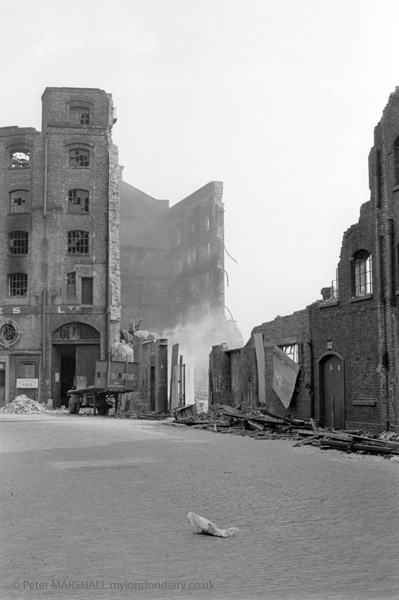
before making my way back into the City,
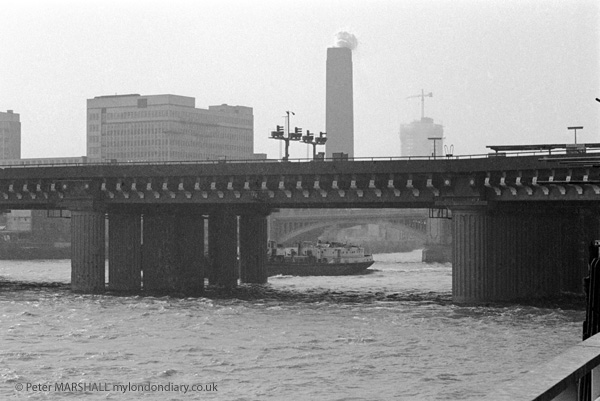
where I made my way along the riverside past Cannon St station. The smoking chimney in the centre of the picture is the Bankside Power Station, now enjoying a new lease of life as the art gallery Tate Modern.
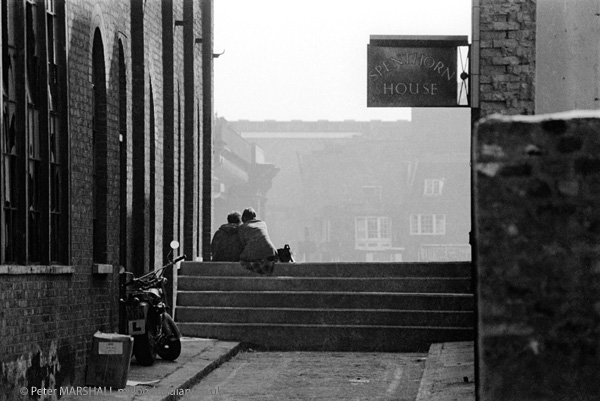
A couple sit looking out over the Thames at the end of Cousin Lane. It looks rather different now. The Spenthorn Service Company had been wound up the previous year and Spenthorn House is now long demolished and on the left of the lane there is now a pub under the bridge. What has a little romantic dereliction has been replaced by commercial tat. Across the river you can still see the Anchor pub. There are now more areas and paths opened up by the river than in 1974.
Technically these pictures, taken on 35mm film were not always great, and like much of my older work require considerable retouching using Photoshop and a Wacom graphics tablet after an infestation of minute gelatine loving insects who have left their tracks and the occasional body part across the negative. I think they give an interesting view of a city that was beginning to change rapidly.